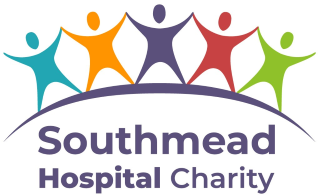This page details what you can expect to happen once a decision has been made that you will be going forward for Deep Brain Stimulation (DBS).
What is Deep Brain Stimulation (DBS)?
DBS is a surgical procedure to treat some of the symptoms of Parkinson’s.
The procedure involves:
- The implantation of 2 leads, each with 8 electrodes (otherwise known as “contacts”), into structures deep within the brain called the basal ganglia.
- The two extension leads are positioned under the skin of the head, neck, and shoulder.
- The extension leads are connected to a small unit called an Implantable Pulse Generator (IPG), which is placed under the skin just below the collarbone.
Deep Brain Stimulation works by sending electrical pulses to a selected area of the brain. These change the electrical signals in the brain that cause some of the symptoms of Parkinson’s.
The amount of stimulation provided by the IPG is adjusted to optimise therapeutic benefits and minimise side effects.
Deep Brain Stimulation is not a cure for Parkinson’s. However, it can help to address some symptoms by:
- Increasing “on” time.
- Reducing severity and amount of “off” time.
- Improving tremor.
- Enabling a reduction in Parkinson’s medication, and thus minimise the duration and severity of dyskinesia (involuntary movements).
- Reducing rigidity (stiffness) to the limbs.
- Reducing bradykinesia (slowness) to the limbs and when walking.
What are the risks of Deep Brain Stimulation?
We estimate that the overall risk of a significant adverse event with DBS surgery performed in our unit (including stroke and infection) is less than 5%.
The following are some of the risks associated with the surgery:
- Bleeding (haemorrhage) - which in the worst case could cause severe long term disability requiring long term care or death. The risk of a severe disability or death from bleeding in the brain is very rare.
- Infection - in the worst case requiring removal of the system and reimplantation of the system a few weeks later. You will be without DBS therapy during this time if this occurs. The risk of infection is less than 2% for primary DBS procedures.
- Seizures (fits) - 0-3% chance of occurring.
- Stroke - 1% chance of occurring, which in the worst case can cause weakness and numbness in the body.
- Meningitis or abscess of the brain - 1% chance of occurring.
- Post-operative confusion and disorientation (transient) - 1% chance of occurring.
- Unsteadiness and possible falls.
- Speech and swallowing problems - 5% chance of occurring.
Other medical complications of surgery
It is possible that the following medical complications may occur: chest infection, Deep Vein Thrombosis (DVT blood clot in the leg), or Pulmonary Embolism (PE a blood clot in the lung).
After the surgery, some patients may have difficulty passing urine due to the anaesthetic. This could result in the need for a urinary catheter, short term. This increases the risk of a urinary tract infection, which may then require antibiotics.
Stimulation-related side effects
The following side effects can be experienced if the electric current spreads to areas surrounding the planned target area for stimulation in the brain:
- Sensations of pins and needles in your arms and legs.
- Facial contractions.
- Balance impairment and possible falls.
- Speech changes an occur, such as slurring of words or speaking softly.
- Problems with eyelid opening.
These side effects are usually resolved by reducing the electric current.
The surgery process: what you can expect
Once the decision is made that you are proceeding to DBS, your Movement Disorder nurse specialist will refer you for surgery.
The DBS surgical coordinator will add you to the waiting list and will liaise with you about your appointments and admission for surgery.
Should you need to, you can contact the DBS surgical coordinator by phone on 0117 954 6700.
- Step 1: Pre-operative Assessment Clinic (NPAC).
- Step 2: Planning scans under general anaesthetic as a day case.
- Step 3: Admission for surgery.
Full details are below.
Step 1 - Neurosurgery Pre-operative Assessment Clinic (NPAC)
- The purpose of the Pre-operative Assessment clinic is to confirm that you are medically fit for surgery.
- This outpatient appointment will be in the Brunel building at Southmead Hospital.
- You will be reviewed by one of the Neurosurgery advanced nurse practitioners, who will assess your suitability to undergo general anaesthetic for the planning scans and subsequently for your surgery.
- Assessments will include general observations such as monitoring your temperature, pulse, blood pressure and oxygen saturations, as well as an electrocardiogram (ECG). An MRSA screening swab and blood samples will also be taken.
- Additional tests may be required on an individual patient basis. Some of these additional tests may be performed closer to home in your local hospital or by your GP.
- The results of tests performed at your Pre-operative Assessment Clinic will be valid for 18 weeks. If you do not have your surgery within 18 weeks of your appointment, you may need to have tests repeated.
- Once you are confirmed to be medically fit for surgery, an appointment will be made for you to have your planning scans.
Step 2 - Planning scans
- Ahead of your surgery, you will undergo a detailed magnetic resonance imaging (MRI) and computerised tomography (CT) scan of your brain under general anaesthesia, performed as a day case procedure.
- You will be asked to attend a few hours before the scan.
- The scans will take around 2 hours.
- You are able to take your Parkinson’s medication on the morning of your MRI, up to one hour before your procedure.
- You will be given instructions about not eating and drinking prior to your scan.
- If you take medication to thin your blood (anticoagulants), you will be advised on when you may need to stop this medication by the NPAC nursing team.
- The scans provide very detailed information about your brain anatomy, which allows the surgeon to plan your surgery.
- The surgeons use specially designed surgical planning software to identify the target site in the brain on the scan.
- The software is then used to plan a safe route through the brain, avoiding critical/vascular structures.
- To get the highest quality images, the MRI scan is performed under general anaesthesia.
- These images will be used to plan your operation.
- Once you have recovered from the anaesthesia, you will be discharged from the hospital.
- Please do not drive for at least 24 hours after the anaesthetic and only drive when you feel fully recovered.
- Please ensure you have someone with you overnight.
Step 3 - What to expect from the operation
You will be admitted to the Brunel building on the morning of your surgery. A checklist of items to bring with you is at the end of this leaflet.
The surgery is performed under a general anaesthesia (you will be asleep throughout).
- During the first stage of the operation, the stereotactic frame will be applied to your head and an intra operative CT scan will be performed.
- Computer software will then merge your MRI planning scan with this CT scan.
- The first part of the operation is performed with the assistance of a neurosurgical robot.
- The neurosurgeon will make two incisions on the top of the head. Whenever possible, your hair will not be shaved.
- Two burr holes will be made in the skull using the robot to guide the instruments.
- The neurosurgeon will implant guide tubes through each burr hole, resting just above the target area.
- The DBS electrodes will then be passed down the guide tubes to the target area.
- Another intra-operative CT scan will be performed, confirming that the position of the leads is within the target area of the brain.
- During the second part of the operation, the DBS leads are then connected to extension leads, which will be secured to the scalp and brought down the side of the neck through a small incision behind the left ear.
- The extensions are then connected to the implantable pulse generator (IPG), which is implanted to the left side of the chest through a small incision.
- The whole DBS system is placed under the skin.
- The surgery will take approximately 4 - 5 hours in total.
Step 4 - After your surgery
- You will resume your usual Parkinson’s medication regime as soon as appropriate following the operation.
- Patients usually remain in hospital for 1 - 2 nights after their surgery.
- You will be reviewed by one of the Movement Disorder nurse specialists on the ward prior to discharge, who will discuss discharge advice and plans for switching on and programming the stimulator.
- You should not drive until you’ve had the first appointment after your surgery at Southmead so that we can confirm your clinical recovery; this will be in approximately 4 - 6 weeks.
- Information and advice about what happens after surgery is available in the leaflet: ‘Discharge from hospital following Deep Brain Stimulation Surgery’
Checklist for your surgery
Please bring the following:
- Your medication in the original packaging and, if possible, a medication list/prescription.
- If you take Apomorphine, please ensure that you bring enough needles and administration lines for the duration of your stay.
- Nightwear, comfortable clothes, and a washbag for your stay.
- Glasses if you wear them.
- Walking aid if you use one.
- You may wish to bring books, magazines etc for use during your stay.
How to contact us:
- Complex Therapies Services
(Deep Brain Stimulation and Duodopa Therapy)
Bristol Brain Centre
Elgar House
Southmead Hospital
BS10 5NB - Daily Nurse Clinic Line
Monday - Friday
0117 414 8269 - DBS Surgical Coordinator
0117 954 6700
© North Bristol NHS Trust. This edition published March 2023. Review due March 2026. NBT003513
Support your local hospital charity

See the impact we make across our hospitals and how you can be a part of it.

